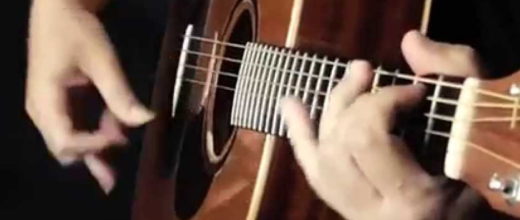-
15May2017
- comments:
- 0
- share:
How to do a song arrangement for solo guitar. Part 2

One thing that is really going to help with developing arrangements is your picking style, that is being able to keep a rhythm or bass part going at the same time as you play the melody. If you feel that is just way over your head it may be time to learn some basic ‘chicken pickin’ techniques. Take a look at the old classic ‘Freight Train’ which has been nicely arranged by Tommy Emmanuel. The work of Chet Atkins and Merle Travis is also worth looking into, Chet Atkins has a fantastic arrangement of Mr Sandman that can be learnt in a fairly short space of time.
Without learning those songs another popular technique is to find say the first four chords of the song and then try and weave the melody in and outside of that. Take ‘Waltzing Matilda’, which has its first four chords as C G Am F. Considering the fact that the first melody note of the song is an E and the open E string is part of the C chord then that can mean the melody can be picked as soon as you start, then when the melody moves it goes to a D note, which is part of the G chord, which means the melody can be played within that G chord. I’ll add a guitar TAB here to explain
So in short the best way to start here is to strum your C chord then strike the open string and play those first four notes (yo know, once a jolly) over the top of the C chord that is still ringing out. Then hit the next two D’s (swag-man) on the G strum.
Knowing what the general bass part is doing can really help as well. I’ve attached a link to my arrangement of Eleanor Rigby by the Beatles here in which I’ve made the bass line as obvious as possible, in a way that’s reminiscent of the original Beatles recording. I’m using hybrid picking here to play this arrangement in which the bass is underneath the melody part, it’s obviously a difficult technique, which takes a lot of practise but once you have the hybrid picking thing down then it can make arranging tunes a lot easier from then on.
Oh and practice, practice, practice.



No Comments